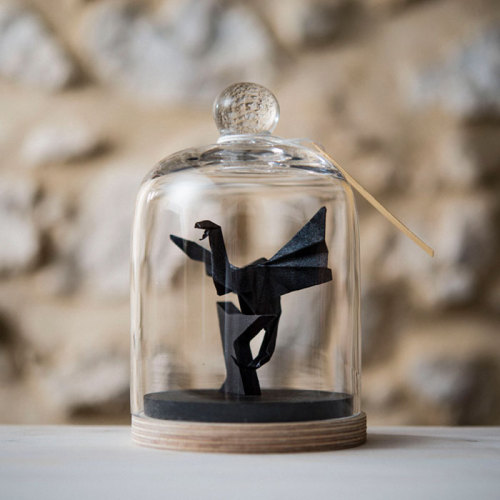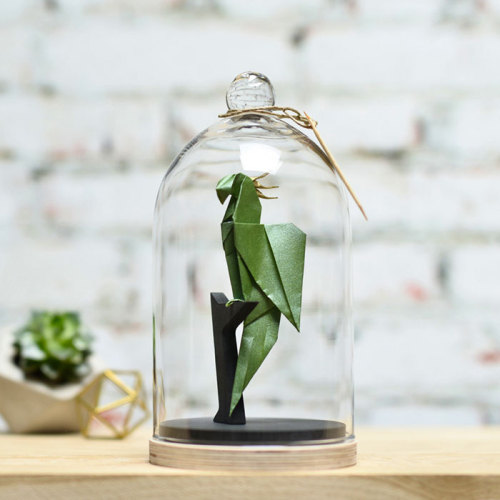Music Trivia!
Music trivia!
Okay so it seems like people will call any mallet percussion instrument a xylophone and I’m here to teach you shit.

This is a xylophone. The wood part is thick and it’s high pitched.

This is a marimba. It’s huge and expensive. No like a small one costs over $4,000 (3186.20 euros). The key things are really long and thin.

Now do you see this beautiful instrument? This is called the vibraphone motherfuckers. Or just the vibes. Anyways it sounds amazing. I could marry the sound. Basically, it;s made of metal and you have a pedal to stop it from ringing too long.

This is the glockenphejksdfjkl. I have no idea how to spell it, so lets just call it the orchestral bells. If you hit this shit too loud it can burst your eardrums.

These are a joke.
More Posts from Marquicey and Others
Upside down and right side in!

Legend... Wait for it...
Set the origaminals free!!










Elegant Origami Sculptures by Floriane Touitou
Parisian boutique FlorigamiShop features stunning and elegant animal origami sculptures by artist Floriane Touitou. Since 2014, Touitou has been constructing handmade unicorns, dragons, and antelopes among her majestic and magical creations. You can find more designs on her Etsy shop!
View similar posts here!
Makes you better?



311 day! Enlarged to show detail 3 in the theater Queue! I love fan families!
Neuroscience

Brain Opioids Help Us to Relate with Others
Recent results obtained by researchers from Turku PET Centre and Aalto University have revealed how the human brain’s opioid system modulates responses to other people’s pain.
Seeing others experiencing pain activated brain circuits that are known to support actual first-hand experience of pain. The less opioid receptors the participants had in their brain, the stronger were their emotion and pain circuits’ response to seeing others in distress. Similar association was not found for the dopamine system despite its known importance in pain management.
– Capacity for vicarious experiences is a fundamental aspect of human social behaviour. Our results demonstrate the importance of the endogenous opioid system in helping us to relate with others’ feelings. Interindividual differences in the opioid system could explain why some individuals react more strongly than others to someone else’s distress, says Researcher Tomi Karjalainen from Turku PET Centre.
– The results show that first-hand and vicarious pain experiences are supported by the same neurotransmitter system. This finding could explain why seeing others in pain often feels unpleasant. High opioid-receptor availability may, however, protect against excessive distress resulting from negative social signals, such as other people’s distress. Our findings thus suggest that the brain’s opioid system could constitute an important social resiliency factor, tells Professor Lauri Nummenmaa from Turku PET Centre and Department of Psychology at the University of Turku.
The study was conducted by using positron emission tomography (PET) and functional magnetic resonance imaging (fMRI). The participants were injected with radioactive compounds that bind to their brain’s opioid and dopamine receptors. Radioactivity in the brain was measured twice with the PET camera to map the distribution of opioid and dopamine receptors. Subsequently, the participants’ brain activity was measured with fMRI while they viewed videos depicting humans in various painful and painless situations.
-
 tyty0526 liked this · 7 months ago
tyty0526 liked this · 7 months ago -
 arsenichoneypuff liked this · 9 months ago
arsenichoneypuff liked this · 9 months ago -
 superllama42 liked this · 11 months ago
superllama42 liked this · 11 months ago -
 bikerfish liked this · 1 year ago
bikerfish liked this · 1 year ago -
 paye-tarecherche liked this · 1 year ago
paye-tarecherche liked this · 1 year ago -
 blushshop liked this · 1 year ago
blushshop liked this · 1 year ago -
 zeichenlily reblogged this · 1 year ago
zeichenlily reblogged this · 1 year ago -
 zeichenlily liked this · 1 year ago
zeichenlily liked this · 1 year ago -
 madamonsieur-silvrene liked this · 1 year ago
madamonsieur-silvrene liked this · 1 year ago -
 aqueerdarrenstan reblogged this · 1 year ago
aqueerdarrenstan reblogged this · 1 year ago -
 alien-girl-21 reblogged this · 1 year ago
alien-girl-21 reblogged this · 1 year ago -
 alien-girl-21 liked this · 1 year ago
alien-girl-21 liked this · 1 year ago -
 blankerthought reblogged this · 1 year ago
blankerthought reblogged this · 1 year ago -
 uwuthomasuwu reblogged this · 1 year ago
uwuthomasuwu reblogged this · 1 year ago -
 uwuthomasuwu liked this · 1 year ago
uwuthomasuwu liked this · 1 year ago -
 goldplated-disaster reblogged this · 1 year ago
goldplated-disaster reblogged this · 1 year ago -
 tomicaleto reblogged this · 1 year ago
tomicaleto reblogged this · 1 year ago -
 random-wyvern liked this · 1 year ago
random-wyvern liked this · 1 year ago -
 sarthefirst reblogged this · 1 year ago
sarthefirst reblogged this · 1 year ago -
 valquainton liked this · 1 year ago
valquainton liked this · 1 year ago -
 cyan-kelpie reblogged this · 1 year ago
cyan-kelpie reblogged this · 1 year ago -
 cyan-kelpie liked this · 1 year ago
cyan-kelpie liked this · 1 year ago -
 thisisnotjuli reblogged this · 1 year ago
thisisnotjuli reblogged this · 1 year ago -
 mercurialshigh liked this · 1 year ago
mercurialshigh liked this · 1 year ago -
 xbnn reblogged this · 1 year ago
xbnn reblogged this · 1 year ago -
 annoyingclownery reblogged this · 1 year ago
annoyingclownery reblogged this · 1 year ago -
 that-bug-kid reblogged this · 1 year ago
that-bug-kid reblogged this · 1 year ago -
 that-bug-kid liked this · 1 year ago
that-bug-kid liked this · 1 year ago -
 ethereal-nightingale reblogged this · 1 year ago
ethereal-nightingale reblogged this · 1 year ago -
 green-cargaytions reblogged this · 1 year ago
green-cargaytions reblogged this · 1 year ago -
 local-human-disaster reblogged this · 1 year ago
local-human-disaster reblogged this · 1 year ago -
 redfoxflying reblogged this · 1 year ago
redfoxflying reblogged this · 1 year ago -
 datgarbagebin liked this · 1 year ago
datgarbagebin liked this · 1 year ago -
 allthespecificity reblogged this · 1 year ago
allthespecificity reblogged this · 1 year ago -
 allthespecificity liked this · 1 year ago
allthespecificity liked this · 1 year ago -
 budgiesocks liked this · 1 year ago
budgiesocks liked this · 1 year ago -
 josaprcat reblogged this · 1 year ago
josaprcat reblogged this · 1 year ago -
 josaprcat liked this · 1 year ago
josaprcat liked this · 1 year ago -
 potatosapien5 liked this · 1 year ago
potatosapien5 liked this · 1 year ago -
 asquared-ohgodnotthehorrors reblogged this · 1 year ago
asquared-ohgodnotthehorrors reblogged this · 1 year ago -
 asquared-ohgodnotthehorrors liked this · 1 year ago
asquared-ohgodnotthehorrors liked this · 1 year ago -
 whoophoney liked this · 1 year ago
whoophoney liked this · 1 year ago -
 marlenacantswim reblogged this · 1 year ago
marlenacantswim reblogged this · 1 year ago -
 risquemargay reblogged this · 1 year ago
risquemargay reblogged this · 1 year ago -
 cleaverqueer liked this · 1 year ago
cleaverqueer liked this · 1 year ago -
 getsemantic reblogged this · 1 year ago
getsemantic reblogged this · 1 year ago -
 getsemantic liked this · 1 year ago
getsemantic liked this · 1 year ago
